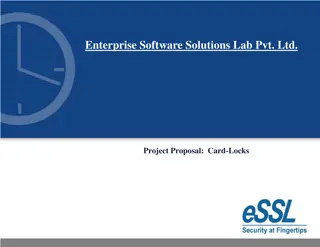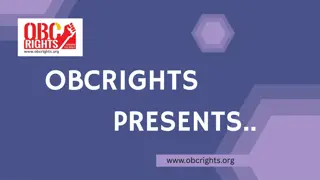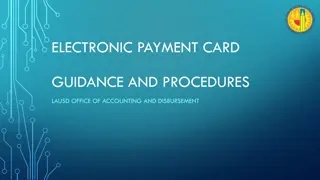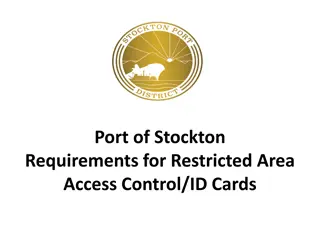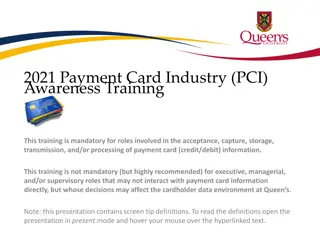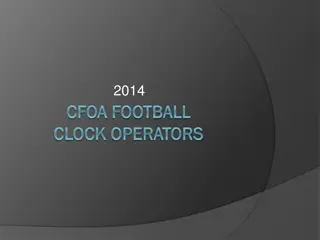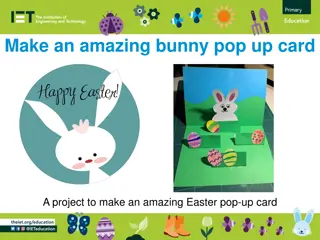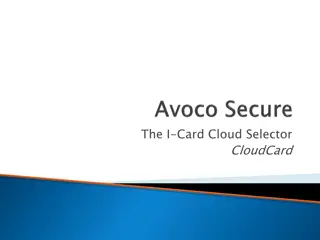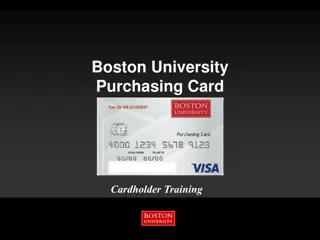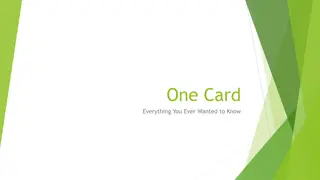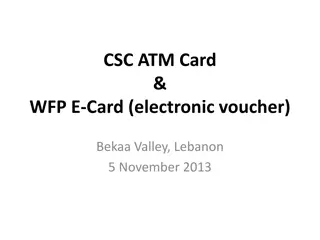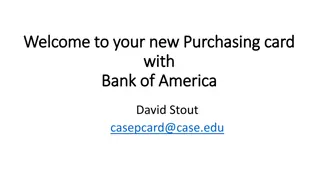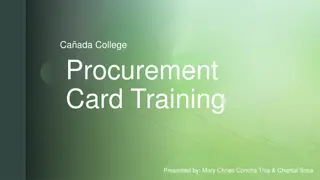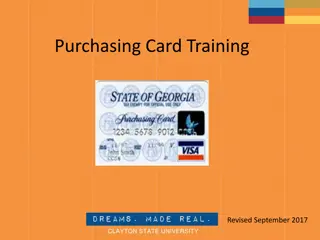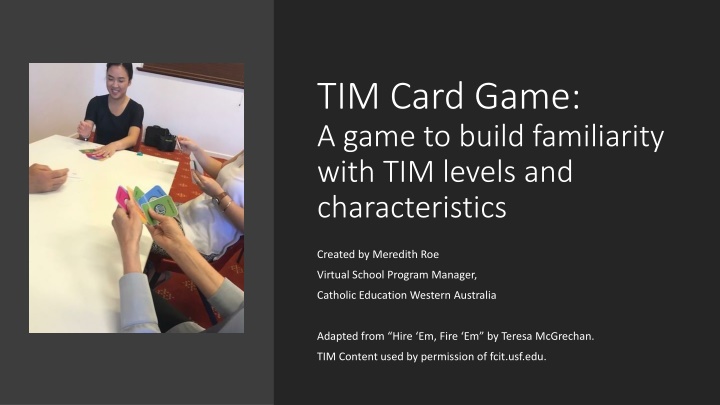
TIM Card Game: Interactive Learning Activity for Understanding TIM Levels and Characteristics
Engage in the TIM Card Game to enhance familiarity with TIM levels and characteristics such as Active, Collaborative, Constructive, Authentic, and Goal-Directed. Designed by Meredith Roe, this game fosters knowledge transfer through trading cards and strategic gameplay. Explore the world of Meaningful Learning Cards and strive to collect a complete set with similar characteristics and different TIM levels. Unveil the fun and educational aspects of this game while immersing yourself in the principles of transformative learning.
Download Presentation

Please find below an Image/Link to download the presentation.
The content on the website is provided AS IS for your information and personal use only. It may not be sold, licensed, or shared on other websites without obtaining consent from the author. If you encounter any issues during the download, it is possible that the publisher has removed the file from their server.
You are allowed to download the files provided on this website for personal or commercial use, subject to the condition that they are used lawfully. All files are the property of their respective owners.
The content on the website is provided AS IS for your information and personal use only. It may not be sold, licensed, or shared on other websites without obtaining consent from the author.
E N D
Presentation Transcript
TIM Card Game: A game to build familiarity with TIM levels and characteristics Created by Meredith Roe Virtual School Program Manager, Catholic Education Western Australia Adapted from Hire Em, Fire Em by Teresa McGrechan. TIM Content used by permission of fcit.usf.edu.
Card Types Complete Set The object of the game is to collect 5 cards of one set by trading cards with other players. A complete set of five cards has the same TIM learning characteristic (Active, Collaborative, Constructive, Authentic, or Goal-Directed) at the top of each card and a different TIM level (Entry, Adoption, Adaptation, Infusion, and Transformation) at the bottom. Characteristics of Meaningful Learning Cards These are shuffled and dealt separately from the other cards, at the start of each game, so players know which set they are collecting. You want to avoid having this card in your hand when the game is won. If you re dealt this card at the start, you get to start the trading (put it aside, not for trading) fcit.usf.edu/matrix/ fcit.usf.edu/matrix/
Players Maximum of 5 players per deck of cards. If there are 4 players, remove one characteristic card and the corresponding set of cards. If there are 3 players, remove two characteristic cards and the corresponding sets of cards. Dealing cards 1. Shuffle and deal the characteristic cards, face down. Players can look at their own characteristic card to determine which set to collect (don t show anyone!). Put the characteristic card aside (these are not traded). 2. Shuffle all cards, except the characteristic cards. Deal five cards, face down, to each player. 3. Players pick up their own cards (don t show anyone!) and sort them. Starting the game The person with the purple transformation card begins by laying the card aside, face up. This person will propose the first trade. fcit.usf.edu/matrix/ fcit.usf.edu/matrix/
Trading 1. The person with the purple card starts the trading when they are ready. 2. Trade cards face down and state the number of cards (NOT the type). 3. There is no order for trading. 4. Only one trade can sit on the table at a time. 5. If no one accepts the trade, the owner has to take the cards back. 6. You can trade as many cards as you like in one trade, as long as they are from the same set (e.g., you can only trade 2 authentic cards or 3 active cards). 7. The only exception to the rule above is the black entry card. This can be traded with another card/set of cards. fcit.usf.edu/matrix/ fcit.usf.edu/matrix/
Winners and Losers! 1. The game is won when the first person collects their full set (winner calls out). 2. The loser is the person who ends up with the black card. Optional - At the end of the game, you could ask: The winner to give an example of a transformation level activity, for the set they ve collected. The loser to give an example of how to modify a lesson from entry level for the set they ve collected, to a higher level. All players to give an example of an activity at [pick a level], for the set of cards they ve collected. fcit.usf.edu/matrix/ fcit.usf.edu/matrix/
ACTIVE GOAL-DIRECTED COLLABORATIVE CONSTRUCTIVE Entry Entry Entry Entry fcit.usf.edu/matrix/ fcit.usf.edu/matrix/
ACTIVE GOAL-DIRECTED COLLABORATIVE CONSTRUCTIVE Adoption Adoption Adoption Adoption fcit.usf.edu/matrix/ fcit.usf.edu/matrix/
ACTIVE GOAL-DIRECTED COLLABORATIVE CONSTRUCTIVE Adaptation Adaptation Adaptation Adaptation fcit.usf.edu/matrix/ fcit.usf.edu/matrix/
ACTIVE GOAL-DIRECTED COLLABORATIVE CONSTRUCTIVE Infusion Infusion Infusion Infusion fcit.usf.edu/matrix/ fcit.usf.edu/matrix/
CONSTRUCTIVE ACTIVE GOAL-DIRECTED COLLABORATIVE Transformation Transformation Transformation Transformation fcit.usf.edu/matrix/ fcit.usf.edu/matrix/
AUTHENTIC AUTHENTIC AUTHENTIC AUTHENTIC Adaptation Adoption Infusion Entry fcit.usf.edu/matrix/ fcit.usf.edu/matrix/
TRANSFORMATION CARD ENTRY CARD AUTHENTIC AUTHENTIC Work to be done! NOT A WINNER THIS TIME Top of your game! START TRADING Characteristic Card Transformation fcit.usf.edu/matrix/ fcit.usf.edu/matrix/
GOAL-DIRECTED ACTIVE COLLABORATIVE CONSTRUCTIVE Characteristic Card Characteristic Card Characteristic Card Characteristic Card fcit.usf.edu/matrix/ fcit.usf.edu/matrix/

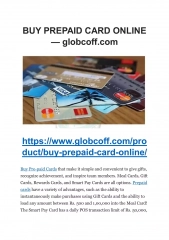
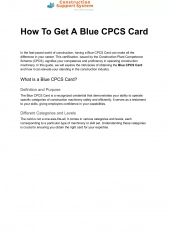
![Guardians of Collection Enhancing Your Trading Card Experience with the Explorer Sleeve Bundle [4-pack]](/thumb/3698/guardians-of-collection-enhancing-your-trading-card-experience-with-the-explorer-sleeve-bundle-4-pack.jpg)
